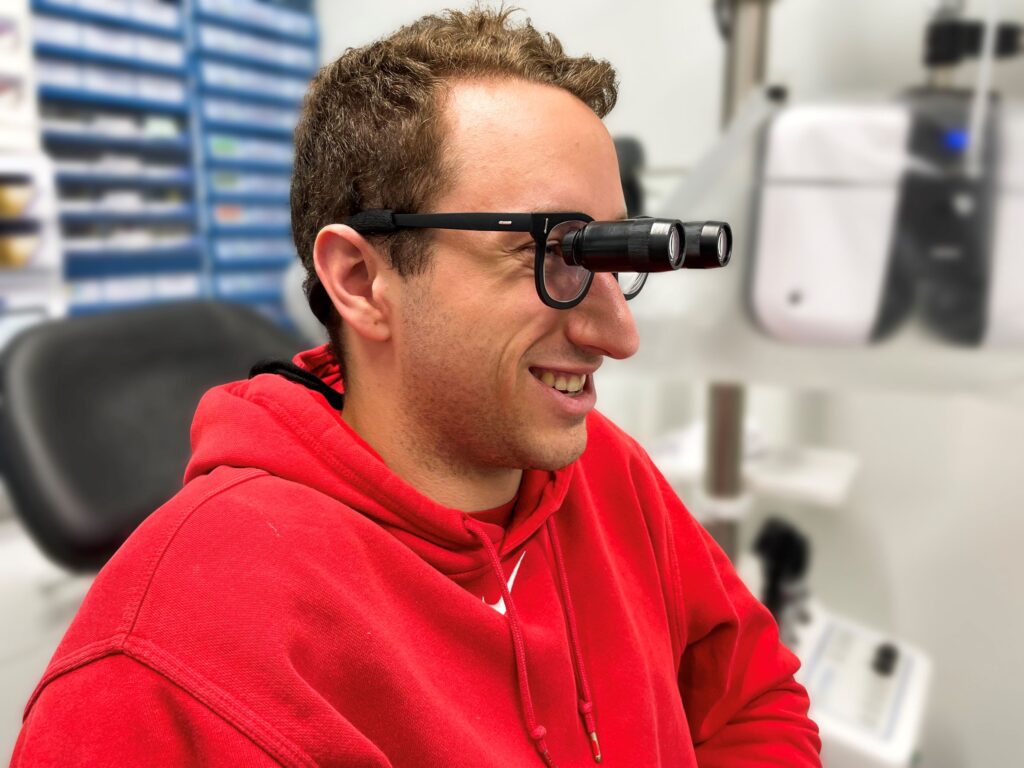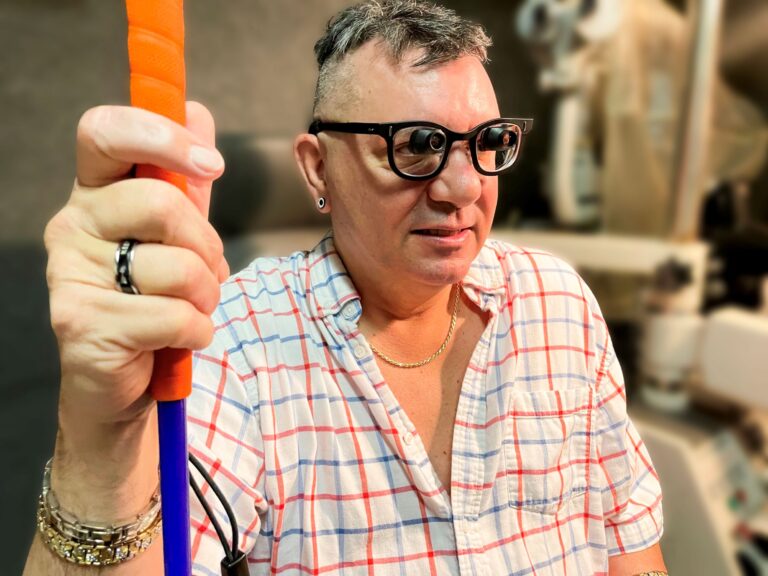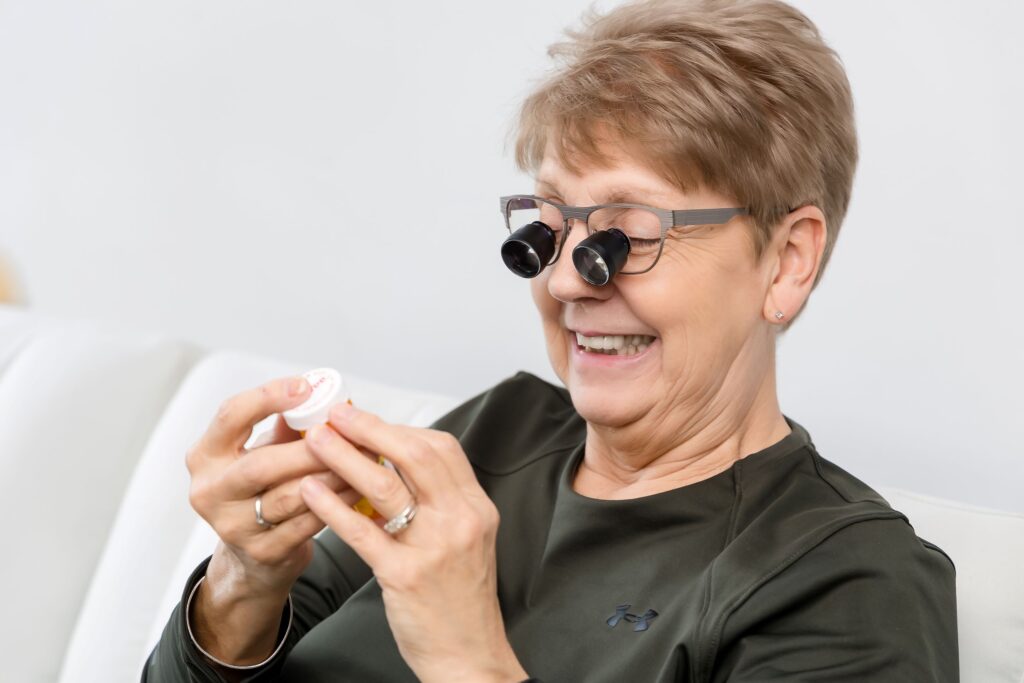Low Vision Optometry of Western NY
Tuesdays -Thursdays: 9:00 am - 5:00 pm; Fridays: 9:00 am - 3:00 pm
Eye Conditions

Macular Degeneration
Macular degeneration is an eyesight disorder that commonly affects people over the age of 50. If acquired, the disease can severely impact all spheres of a person’s life by reducing their independence and causing difficulty while driving, reading, and the inability to recognize faces and colors or see objects in detail.
Macular degeneration is of two types:
- Dry Macular Degeneration
- Wet Macular Degeneration
Stargardt Disease
Stargardt disease is a rare congenital disorder affecting children and teenagers, primarily aged between 6-12. While the condition is usually present at birth, its symptoms develop during childhood, and vision loss increases with age.
Stargardt disease causes impaired central vision and difficulty distinguishing colors, reading comprehension, and seeing clearly in low-light environments. Dr. Kornfeld recommends that people with a family history of Stargardt disease get checked to prevent issues later.
As the disease causes macular degeneration, it does not have a known cure as of yet. Stargardt disease can cause low vision over time as the damaged macula impacts the light reaching a person’s brain, leading to impaired vision such as blind spots and light sensitivity. As a low vision optometry specialist, Dr. Kornfeld supervises Stargardt patients, monitors the disease, and prescribes low vision aids that are ideal to allow the patient to lead an everyday life.


Juvenile Macular Degeneration
The macula is the middle portion of the eye’s retina and is responsible for precise central vision and regulating daily activities such as driving, reading, and seeing objects and colors correctly. Macular degeneration can be acquired during any stage of a person’s life. However, it is more commonly found in people over 50.
Juvenile Macular Degeneration is usually present in a person during childhood and stays with them through adolescence and adulthood.
Similar to other macular degeneration disorders, juvenile macular degeneration also does not have a known cure. However, Dr. Kornfeld utilizes advanced medical examinations coupled with low vision aid and devises a suitable strategy for each patient for their lifestyle needs.
At Low Vision Optometry of Western New York, we are committed to assisting our patients by implementing modern strategies and thoroughly understanding each patient’s condition and stage of the disease. Our progressive approach allows people with juvenile macular degeneration to lead a stable lifestyle without being dependent on their loved ones.

Glaucoma
Glaucoma is a set of eye conditions caused by excessive pressure buildup, called intraocular pressure (IOP), damaging the eye’s optic nerve. The optic nerve transmits nerve signals from the retina to the brain. If the optic nerve is compromised, the brain loses its ability to form images or discern objects, which causes visual impairment.
Advanced digital devices such as portable digital magnifiers, IrisVision, Orcam, Jordy, eSight, and CCTVs can maximize the vision of a glaucoma patient, allowing them to live everyday life and enjoy the things they love.
At Low Vision Optometry of New York, we schedule regular glaucoma screenings to monitor the progress and manage the condition efficiently.

Diabetic Retinopathy
Diabetic Retinopathy is an eye disorder that can develop as diabetes progresses, and the blood vessels positioned in the back of the eye leak fluid or bleed.
In its initial stages, Diabetic Retinopathy does not cause significant vision loss. However, if the condition is not diagnosed early, it can lead to severe visual impairment and cause blurred vision, dark areas in your vision, and deteriorating color vision.
Dr. Kornfeld can maximize your existing vision as a low vision specialist by employing modern optic techniques and conducting regular screenings. Medications and injections such as Anti-VEGF used by an ophthalmologist can help patients with Diabetic Retinopathy regulate the condition and lead a stable, independent life.
Retinitis Pigmentosa (RP)
Retinitis Pigmentosa is a congenital disease that causes degeneration of the retina. RP is caused as a result of the inability of rod photoreceptor cells to sense light. The disorder leads to peripheral vision impairment and makes it difficult to see during the night. Once the disease progresses, it can also affect central vision and lead to complete blindness.
At Low Vision Optometry of Western New York, we go out of our way to equip patients with tools and strategies that will allow them to lead an everyday life and continue doing the things they love. RP leads to peripheral vision loss, making it difficult to do routine activities such as driving, reading, or using a phone.
Depending upon the intensity of the condition, we prescribe optical devices such as side vision glasses and custom fit bioptic telescopic lenses, telemicroscope eyeglasses, prismatic reading glasses, or magnifiers to allow RP patients to carry out daily activities normally.

Cataracts
Cataracts is an eye condition that typically develops after the age of 60. The disease is associated with blurry vision and the inability to drive or read as objects are out of focus. A cataract develops when eye lenses become clouded, distorting a person’s image.
While surgery is the most common option for cataract patients, we provide various non-invasive options that allow them to enjoy their hobbies and live their lives without visual impairment.
Dr. Kornfeld assesses your condition and stage and accordingly prescribes low vision devices and glasses such as bioptic telescopic glasses, E-scoop glasses, or magnifiers to enhance your vision.

Hemianopsia
Partial or full vision loss caused by a brain injury or a stroke is called Hemianopsia. Neglect is a condition caused by Hemianopsia that makes a patient unaware of the visual space located towards their left or right side. Neglect causes various problems in a person’s life, such as causing them to bump into things often and misreading words or skipping letters on the eye chart.
At Low Vision Optometry of Western New York, we follow a proper treatment protocol for patients diagnosed with Hemianopsia. The treatments include:
Rumble Rehabilitation Protocol
Desktop Scanning
Wall Scanning
After the rehabilitation period is over and the patient can cope with visual scanning in the direction of Hemianopsia, Side Vision Awareness Glasses (SVAG) is an excellent option. The side vision glasses were created by Dr. Rummel and can be prescribed by any local low vision specialist. SVAG’s advanced optical technology allows a person to navigate safely and perform daily activities normally.

